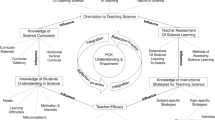Abstract
This study presents the results of a pilot project in which the use of drones for teaching primary school students was examined. In order to implement the project, a framework for their integration in teaching was developed, based on contemporary learning theories. Also, three short interventions were planned and carried out. Although teaching units from the mathematics, physics, and geography courses were selected, the underlying topic was common, namely, metric measurement conversions. The target group was 40 fifth-grade primary school students, divided into two groups. The first group was taught with the use of drones while the second was taught conventionally. Data were collected by means of evaluation sheets and a questionnaire. Results indicated that students in the drones group outperformed students in the conventional teaching group in the Maths evaluation sheet and in all the delayed post-tests. In the other two cases (Physics and Geography evaluation sheets), the results were the same. Students’ attitudes toward drones were highly positive. Finally, the implications of the findings for education are also discussed.
Similar content being viewed by others
References
Beheshti, J. (2012). Virtual environments for children and teens. In C. Eichenberg (Ed.), Virtual reality in psychological medical and pedagogical applications (pp. 271–286). Croatia: InTech.
Biggs, J. (1979). Individual differences in study processes and the quality of learning outcomes. Higher Education, 8(4), 381–394. doi:10.1007/BF01680526.
Birtchnell, T., & Gibson, C. (2015). Less talk more drone: social research with UAVs. Journal of Geography in Higher Education, 39(1), 182–189. doi:10.1080/03098265.2014.1003799.
Brown, M. B., & Forsythe, A. B. (1974). Robust test for the equality of variance. Journal of American Statistical Association, 69, 364–367. doi:10.1080/01621459.1974.10482955.
Carnahan, C., Crowley, K., Hummel, L., & Sheehy, L. (2016). New perspectives on education: Drones in the classroom. Proceedings of the Society for Information Technology & Teacher Education International Conference (pp. 1920–1924).
Carnahan, C., Zieger, L., & Crowley, K. (2016b). Drones in education. Let your students’ imaginations soar. Arlington: International Society for Technology in Education (ISTE).
Corder, G. W., & Foreman, D. I. (2009). Nonparametric statistics for non-statisticians: a step-by-step approach. New Jersey: Wiley.
Driver, R., & Oldham, V. (1986). A constructivist approach to curriculum development. Studies in Science Education, 13, 105–122. doi:10.1080/03057268608559933.
Endres, T., & Renkl, A. (2015). Mechanisms behind the testing effect: An empirical investigation of retrieval practice in meaningful learning. Frontiers in Psychology. doi:10.3389/fpsyg.2015.01054.
Ertmer, P. A., & Newby, T. J. (2013). Behaviorism, cognitivism, constructivism: Comparing critical features from an instructional design perspective. Performance Improvement Quarterly, 26(2), 43–71. doi:10.1002/piq.21143.
Fosnot, C. T. (2013). Constructivism: Theory, perspectives, and practice. New York: Teachers College Press.
Helmke, M. F., Coughlin, M. F., Potter, N., & Sevon, W. D. (2007). Hickory Run Boulder Field (2): Collecting high-resolution, low-altitude aerial photographs by UAV. Geological Society of America Abstracts with Programs, 39(1), 43.
Henderson, S., & Yeow, J. (2012). iPad in education: A case study of iPad adoption and use in a primary school. Proceedings of the 45th Hawaii International Conference in System Science (hicss), (pp. 78–87). New Jersey: IEEE.
Hong, N. S., McGee, S., & Howard, B. C. (2000). The effect of multimedia learning environments on well-structured and ill-structured problem-solving skills. Proceedings of the American Educational Research Association Annual Meeting.
Jordan, B. R. (2015). A bird’s-eye view of geology: The use of micro drones/UAVs in geologic fieldwork and education. GSA Today, 25, 42–43. doi:10.1130/GSATG232GW.1.
Khine, M. S. (2011). Playful teaching, learning games: New tool for digital classrooms. Springer, New York. doi:10.1007/978-94-6091-460-7.
Kinash, S., Brand, J., & Mathew, T. (2012). Challenging mobile learning discourse through research: Student perceptions of Blackboard Mobile Learn and iPads. Australasian Journal of Educational Technology, 28(4), 17. doi:10.14742/ajet.832.
Krajník, T., Vonásek, V., Fišer, D., & Faigl, J. (2011). AR-drone as a platform for robotic research and education. Proceedings of the International Conference on Research and Education in Robotics. Berlin: Springer.
Levy, L. (2015, October). What drone technology can teach students. Retrieved from http://www.edudemic.com/drones-classroom-can-happen/.
Mayer, R., & Moreno, R. (2003). Nine ways to reduce cognitive load in multimedia learning. Educational Psychologist, 38(1), 43–52. doi:10.1207/S15326985EP3801_6.
Osborne, S. (2016). Game of drones. Independent. Education, 46(3), 14–15.
Posner, G. J., Strike, K. A., Hewson, P. W., & Gertzog, W. A. (1982). Accommodation of a scientific conception: Toward a theory of conceptual change. Science Education, 66, 211–227. doi:10.1002/sce.3730660207.
Prensky, M. (2001a). Digital game-based learning. New York: McGraw-Hill.
Prensky, M. (2001b). Digital natives, digital immigrants part 1. On the Horizon, 9(5), 1–6.
Selley, N. (2013). Art of constructivist teaching in the primary school: A guide for students and teachers. Abington: Routledge.
Smith, P., Sefton, V., & Chaffer, L. (2015). Drones: ICT in action. Geography Bulletin, 47(2), 25.
Tolmie, A. K., Topping, K. J., Christie, D., Donaldson, C., Howe, C., Jessiman, E., et al. (2010). Social effects of collaborative learning in primary schools. Learning and Instruction, 20(3), 177–191. doi:10.1016/j.learninstruc.2009.01.005.
Tran K. (2016, September). Flying drones at school: What do you need to know? Retrieved from http://www.schoolgovernance.net.au/2016/09/08/flying-drones-at-school-what-do-you-need-to-know/.
Vukovic, R. (2016, May). Drones in schools: Education reaching new heights. Retrieved from http://au.educationhq.com/news/34778/drones-in-schools-education-reaching-new-heights/#.
White, R. T., & Gunstone, R. F. (1992). Probing understanding. Great Britain: Falmer Press.
Winterfeldt, G., & Hahne, C. (2014). Controlling quad-copters a project-based approach in the teaching of application design. Proceedings of the Global Engineering Education Conference (EDUCON), (pp. 961–968). doi: 10.1109/educon.2014.6826216. New Jersey: IEEE.
Wolpert-Gawron, Η. (2015, November). 7 ways to use drones in the classroom. Retrieved from http://www.edutopia.org/blog/7-ways-use-drones-classroom-heather-wolpert-gawron.
Author information
Authors and Affiliations
Corresponding author
Ethics declarations
Conflict of interest
The authors declare that they have no conflict of interest.
Rights and permissions
About this article
Cite this article
Fokides, E., Papadakis, D. & Kourtis-Kazoullis, V. To drone or not to drone? Results of a pilot study in primary school settings. J. Comput. Educ. 4, 339–353 (2017). https://doi.org/10.1007/s40692-017-0087-4
Received:
Revised:
Accepted:
Published:
Issue Date:
DOI: https://doi.org/10.1007/s40692-017-0087-4




